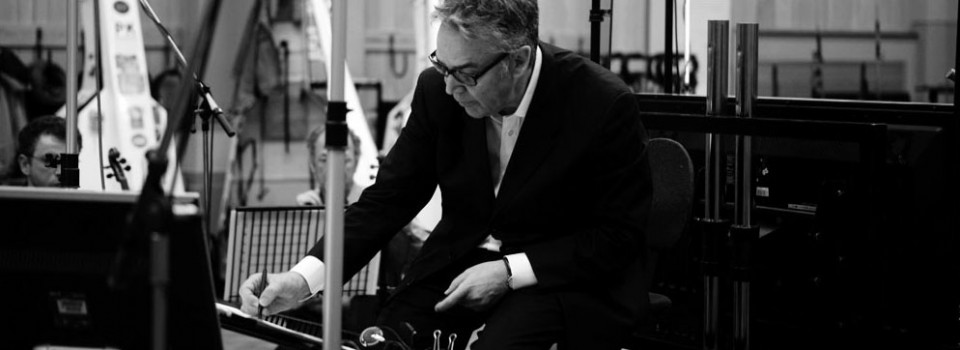Dead Ringers (1988) is a film by David Cronenberg about two identical twin gynaecologists who live in a delicate equilibrium, which is eventually disturbed by psychic depression and the fear of separation. This film marked the fifth collaboration between Howard Shore and David Cronenberg and was the follow up of Cronenberg's hit The Fly (1986), for which Shore wrote the music too.
Upon watching the film and listening to the music, I was especially fascinated by the Main Title sequence as I believe that Shore has written a fabulous piece of music which fits the mood and complements the upcoming narrative of the film perfectly.
The melodic intervals consist of major 2nds and minor 3rds, which create a sense of closeness, confinedness without major leaps and risks - a reflection of the twins' state of minds.
The upcoming tragedy is foreshadowed by the timbre of the motif, which is predominantly in the low register with an almost minor quality to it.
The upcoming tragedy is foreshadowed by the timbre of the motif, which is predominantly in the low register with an almost minor quality to it.
The melodic rhythm is very static and predictable with rather insignificant syncopation, as is the harmonic rhythm of the whole piece which makes use of only four chords throughout - a reflection of the twins' static, ordered and almost predictable lives (click to enlarge images).
The really interesting thing about this particular piece is the pairing of notes and phrases throughout:
The first note is immediately repeated to create a pair - a musical metaphor for twins, which in turn connotes similarity and togetherness. The music continues with repeated notes to further establish the idea. However, the last note of the motif is not repeated, which is a significant change to signal the suppressed desire to separate. The film itself gives a clue later on during a nightmare sequence which shows the brothers joined at the chest like Siamese twins. Shaw states that:
'The dream is an obvious embodiment of Beverly's fear of being separated from Elliot. […] If one accepts the Freudian theory of dreams as wish fulfilments, the dream also suggests that Beverly desires such a separation.'
The repetition continues in bars 3 and 4, only this time it is not a repetition of notes only, but of whole bars - a development but also a further establishment of the title connotation. Another interesting aspect in these two bars lies in the resolving of the 'dissonant' E into the 'satisfying' F# to complete the D major triad. This E was the only note not to be repeated in the main motif, which makes it significant in these bars that it needs to resolve.
This four bar phrase is then repeated (to continue the pairing) and repeated again. The following musical ideas are developments of this material, which follow the idea of repetition rigorously.
What makes this sequence so effective is the subtle but obvious treatment of musical metaphors to foretell the unfolding narrative to a certain extend. I believe Howard Shore has created a benchmark with his Main Titles to Dead Ringers.
'I wanted to create a score [for it] that didn't underline it [the film] too much emotionally. It's quite sophisticated. And so the score is just a reflection of that.' (Howard Shore)
-PW
The really interesting thing about this particular piece is the pairing of notes and phrases throughout:
 |
| Note pairs |
'The dream is an obvious embodiment of Beverly's fear of being separated from Elliot. […] If one accepts the Freudian theory of dreams as wish fulfilments, the dream also suggests that Beverly desires such a separation.'
The repetition continues in bars 3 and 4, only this time it is not a repetition of notes only, but of whole bars - a development but also a further establishment of the title connotation. Another interesting aspect in these two bars lies in the resolving of the 'dissonant' E into the 'satisfying' F# to complete the D major triad. This E was the only note not to be repeated in the main motif, which makes it significant in these bars that it needs to resolve.
 |
| E resolves to F# |
What makes this sequence so effective is the subtle but obvious treatment of musical metaphors to foretell the unfolding narrative to a certain extend. I believe Howard Shore has created a benchmark with his Main Titles to Dead Ringers.
'I wanted to create a score [for it] that didn't underline it [the film] too much emotionally. It's quite sophisticated. And so the score is just a reflection of that.' (Howard Shore)
-PW
 |
| (c) 2014 howardshore.com |




No comments:
Post a Comment